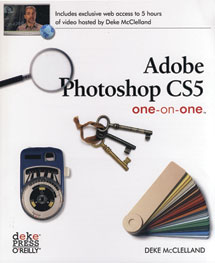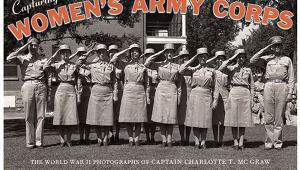Digital Imaging Books: 2010; Real Books For Real Photographers Page 2
Off-Camera Flash; by Rod and Robin Deutschmann; Amherst Media; 128 pages; $34.95; (ISBN: 978-1-584289-92-0)
This is one of the best executed how-to books on using speedlights that I’ve read. What makes it so great is that the book is full of real-world examples that are not only beautifully photographed but sprinkled liberally throughout are images showing specific speedlights and how they’re used. No guessing required. Rod and Robin show how they do it. Most examples are portraits but there are macro shots of bugs and flowers that will keep you busy as you practice these techniques and learn to apply them to your own photography. The book’s interior is as fresh and arresting as is the authors’ incisive text that brims with useful advice, such as their slow shutter off-camera flash, spin, and zoom trick. You’ll want to run outside and give this trick a try as soon as you hit that page and that’s the function of any great how-to book.
 |
Extreme Exposure; by David Nightingale; Amphoto Books; 144 pages; $24.99; (ISBN: 978-0-817439-67-5)
Once when I was teaching a workshop a student told me: “I set the camera on automatic exposure but all of the photographs look bad. What’s wrong?” I told her that her camera will produce perfectly exposed images 90 percent of the time but she shot all of her photos in that last 10 percent! This is the book for her. Beautifully produced and printed, David Nightingale shows many different techniques for working in low-light situations, making it a great read for more experienced photographers as well as for new SLR owners who’ve already figured out the basics. The book’s five sections include one on technical considerations followed up with two chapters on shutter speeds and two on apertures. While this is a relatively small book, Nightingale packs lots of information into it.
 |
The Art of Posing; by Lou Jacobs Jr.; Amherst Media; 128 pages; $34.95; (ISBN: 978-1-584289-91-3)
“How do I pose a portrait subject?” This superb book answers that age-old question. Beginning with an overview, Lou Jacobs Jr. takes you on a journey not only around the country to meet various photographers who then explain in words and outstanding portraits about how they work and how they pose their subjects, but it’s also a tour of portrait genres, from classical portraiture to wedding to glamour. Julia Greer’s contemporary spin on children’s photography will open your eyes not just on posing but on ways to imagine pictures of kids in fresh, new ways. At the other end of the spectrum, Marissa Bouchér’s glamour photography exudes a wholesome romanticism often lacking in this genre. In between, Ron Jacobson’s portraits and posing for brides and high school seniors show how to do the kind of workmanlike images that are salable and will have a wide appeal to today’s portrait customer. The book’s design is fresh with large example images wrapped around text from each of the photographers who explain how they create eye-catching images.
 |
iPad: The Missing Manual; by J. D. Biersdorfer; O’Reilly Media; 300 pages; $24.99; (ISBN: 978-1-449387-84-6)
This is another in the Pogue Press series of “Missing Manuals” and while there are those both within and outside the publishing industry who may doubt the iPad’s importance, the truth is if Canon or Nikon had sold three million cameras of a new model in 80 days it would be considered a game changer. And that’s exactly what happened with the iPad as it shifts the paradigm even further away from the comfort zone of some photographers and industry pros. To some it’s a big iPod touch, to others it’s a new spin on the netbook, but one thing for sure is that it’s just the beginning and if you have an iPad you need this book. Much like O’Reilly’s iPod book, this one is easy to read, well illustrated, and unlike the dummy books, never talks down to the reader while helping them learn how to use the product. It belongs on the nightstands of every iPad owner.
 |
The Digital Darkroom Adobe Photoshop CS5 One-on-One; by Deke McClelland; O’Reilly Media; 468 pages; $49.99; (ISBN: 978-0-596807-97-9)
There’s no doubt in my mind that Deke McClelland knows more about Photoshop than most of us will ever hope to know, and his friendly style of explaining even the most complex technical bits and pieces makes him a true master. This hefty book includes web access to five hours of video that corresponds to chapters in the book. Nicely designed, well illustrated, and beautifully printed on high-quality paper, Adobe Photoshop CS5 One-on-One justifies its hefty price tag in the first 32 pages as McClelland begins with opening an image and goes onto organizing and examining photos and using metadata. The key chapters for me were “Pro Photography Tools” on using Adobe Camera Raw, creating panoramas and HDR images, as well as “Creating and Applying Masks,” which I think is the most misunderstood yet useful Photoshop feature. You may think you already know these basics but chances are you’re wrong and McClelland will ease you down the yellow brick road to Photoshop’s Emerald City.
 |
How to Cheat in Photoshop CS5; by Steve Caplin; Focal Press; 456 pages; $44.95; (ISBN: 978-0-240522-04-3)
I reviewed the previous version of this book and liked it a lot but the new version is bigger, better looking, and full of useful tips on creating photomontages using Photoshop’s latest iteration. Many Photoshop books spend early chapters introducing tools but Steve Caplin demonstrates how to use those tools to create interesting looking images instead of showing boring text and screen shots. Purists will be offended by the author’s abuse of reality (a King Kong panda climbing the Empire State Building!) but others will be amused. But it’s not all fun and games as he also shows practical tips for using the mundane Dodge and Burn tools to create lighting effects that look spectacularly real. While some of the tips involve objects and graphics, the vast majority includes tutorials on creating fun as well as practical imagery. If you photograph people you will love Chapter 8 on “Heads and Bodies,” which includes detailed tips on everything from changing expressions to retouching eyes to doing a makeover.
 |
Rick Sammon’s HDR Photography Secrets for Digital Photographers; by Rick Sammon; Wiley; 192 pages; $29.99; (ISBN: 978-0-470612-75-0)
As new High Dynamic Range (HDR) software is constantly being introduced, there’s still lots of enthusiasm for the technique at the grassroots level and Rick Sammon’s book is the perfect introduction, containing what amounts to a one-on-one workshop with the reader. Illustrated wall to wall with Sammon’s travel photography, the book begins with photographic basics, then takes on the topic of whether to use HDR or not before moving on to showing various tips, tools, and techniques for accomplishing the kinds of eye-catching images that Sammon seems to produce effortlessly. The next to last chapter covers suggested HDR hardware, which I would have preferred at the front of the book, but it’s a small quibble on what is an oft-breathtaking look at HDR photography.
 |
Practical HDRI; by Jack Howard; Rocky Nook; 228 pages; $34.95; (ISBN: 978-1-933952-63-5)
This book’s subtitle says it all: “High Dynamic Range Imaging Using Photoshop CS5 and Other Tools.” If you used the lame “Merge to HDR” function found in older versions of Photoshop you know it was better than nothing—or maybe not. The latest version of the program has significantly improved HDR capabilities and Jack Howard is your guide with
step-by-step tutorials and workflows that show you how to extract the maximum quality image. The book is lovingly produced with excellent design and reproduction and Howard kicks it off with some HDR basics before jumping into the process, including great tips on working in the 32-bit color space. Chapter 9 on “Post Tone Mapping Optimization” contains everything you need to make those photographs jump off your monitor.
 |
For beginning shooters, this is the perfect follow-up book to Rick Sammon’s HDR Photography Secrets for Digital Photographers.
New Books By “Shutterbug” Writers
In the 2009 Expert Photo Techniques guide I contributed a story titled “How I Photograph Women” with a subtitle of “Using the Least Amount of Equipment.” In Joe Farace’s Glamour Photography (www.amherstmedia.com) I expand that concept to show how I photograph glamour, starting with finding models to creating images (nudity advisory) using the least amount of photo equipment possible. No information on any of my tips, tools, or techniques is held back in this full-sized 128-page book. You don’t have to attend any workshops, buy a DVD, or anything else to learn whatever glamour photography “secrets” I’ve acquired over all these years. Everything I know is right here on these pages for you to see and absorb.
 |
Roger Hicks and Frances Schultz teamed up with Steve Luck to update their beautiful and lushly produced Lighting the Nude (www.amphotobooks.com). Updated with more than 70 new images and lighting diagrams, the Revised Edition offers a behind-the-scenes look at how top photographers sculpt light across the human form to create unforgettable images. Inside you’ll find lighting and posing setups along with descriptive text for photographs across a wide range of styles, from classical to fantasy, and romantic to erotic. Lighting the Nude includes camera settings, tips, and techniques from each photographer along with a complete introduction to gear and tips for working with models.
 |
Editorial Director George Schaub has been a busy guy. He’s followed up last year’s Digital Photographer’s Guide to B+W Landscape Photography with a compact book titled Digital Landscape Photography. Part of Lark Books’ (www.larkbooks.com/digital) “Focus On” series, Schaub fills this 144-page book with practical advice on making the best possible landscape photographs. Unlike his previous book that was aimed at the intermediate-level photographer, this one is for everyone, including the person who just received a new digital SLR as a holiday gift. The mostly color images are beautifully reproduced and stunningly photographed and when combined with Lark’s unerring design sense makes for a great package. Available for $17.95 (even less on Amazon.com), this is the book bargain of the year.
 |
Schaub’s Light & Exposure in Digital Photography is also part of Lark Books’ (www.larkbooks.com/digital) “Focus On” series and is a 112-page guide to getting a properly exposed image. If you think that setting your camera to green mode and crossing your fingers will yield properly exposed images, you need this book. Schaub starts at the beginning, showing how camera controls affect exposure but also how understanding light is an important part of arriving at the proper exposure equation. What’s impressive is how text and photographs are tightly woven together into easily digestible bits, so much so that sections such as “Using Scene Contrast” are easily understood not only from the crystal-clear text but from illustrations that illustrate the point. At $17.95, this little gem belongs in every photographer’s camera bag.
 |
Tony Sweet’s Fine Art Digital Nature Photography (www.stackpolebooks.com) is a mini-course in creating the kind of soft, often impressionistic images for which the author is justly famous. Beautifully printed and wrapped in a compact volume, Sweet’s book shows how he starts with Raw format files captured with his Nikon cameras and transforms them using camera filters and digital darkroom tools into images that capture a mood and tell a story. While these techniques refine the images to create that signature “Sweet” look, he shows how all of the hard work done during capture helps him produce the kind of images that are used as a starting point for his quiet masterpieces.
 |
- Log in or register to post comments

















































